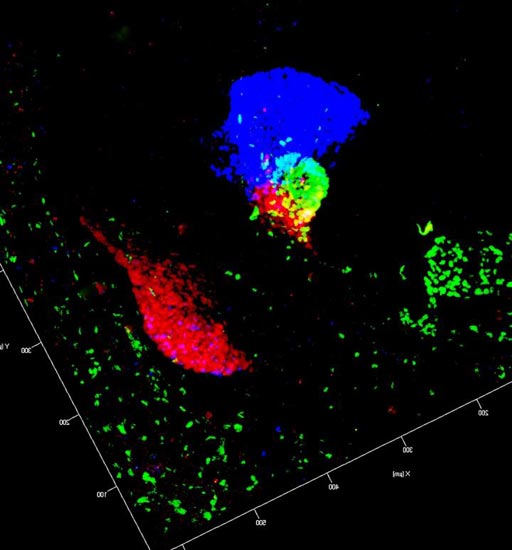Reprogrammed Liver Cells Replace Nonfunctional Pancreatic Cells in Mouse Model
By LabMedica International staff writers
Posted on 28 Feb 2017
A team of cell biologists has developed a method for transforming liver cells into functioning, insulin-producing pancreatic cells and demonstrated its potential by treating diabetes in a mouse model.Posted on 28 Feb 2017
Investigators at the Max Delbrück Center for Molecular Medicine found that engineering liver cells to constantly express the gene TGIF2 (TGFB (Transforming growth factor beta) induced factor homeobox 2) caused them to lose their liver cell identity and revert to a type of undifferentiated stem cell. Further expression of TGIF2 - which is active in pancreatic cells but not in liver cells - caused these cells to acquire the characteristics of pancreatic cells.

Image: A three-dimensional (3D) map of liver and pancreatic buds in a mouse embryo. Cells of the pancreas are marked in red and green, while liver cells appear in blue (Photo courtesy of Dr. Francesca Spagnoli, Max Delbrück Center for Molecular Medicine).
The investigators tested the functionality of the modified liver cells by injecting them into diabetic mice. They reported in the February 13, 2017, online edition of the journal Nature Communications that the animals' blood glucose levels improved, indicating that the cells were replacing the functions of pancreatic islet cells.
"There are differences between mice and humans, which we still have to overcome," said senior author Dr. Francesca M. Spagnoli, head of the molecular and cellular basis of embryonic development group at the Max Delbrück Center for Molecular Medicine. "But we are well on the path to developing a "proof of concept" for future therapies."














